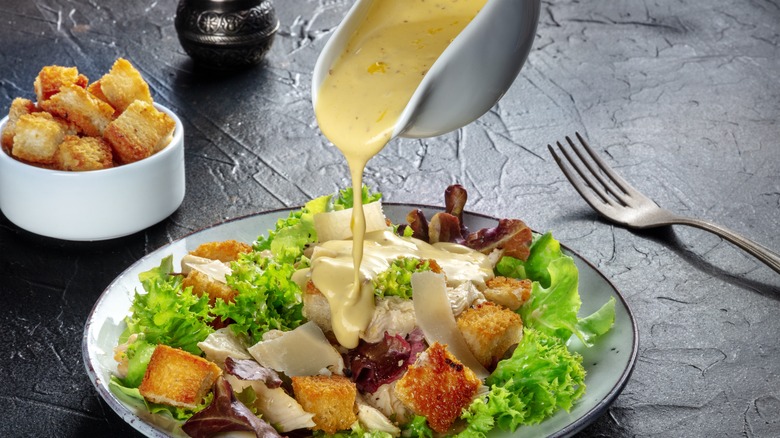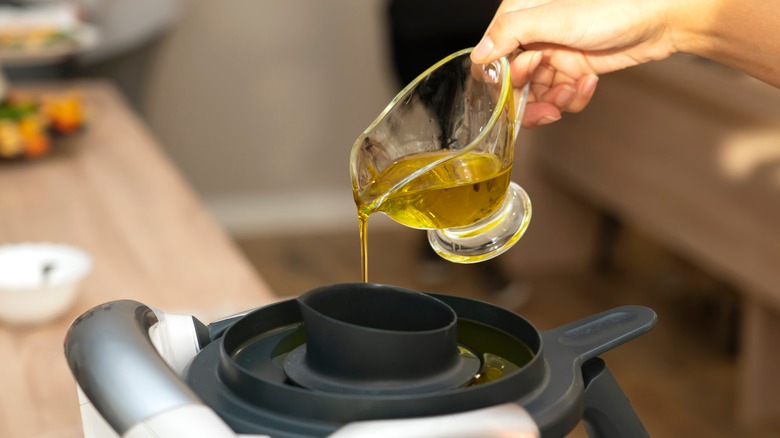For Well-Incorporated Salad Dressings, Break Out The Blender
Making a good salad dressing at home may take a few extra steps, but the results are so worth it. Store-bought dressings can be packed with added sugar, sodium, chemicals, and saturated fats, but when you make them at home, you'll know you're using the freshest ingredients — or at least, you'll know exactly what's going into them. Dairy-based salad toppers such as blue cheese dressing or homemade Thousand Island dressing only take about five minutes to make and can last for up to a week in the fridge (or two weeks for vinaigrettes). If you're a salad lover or hoping to incorporate more veggies into your diet, it may behoove you to have a few homemade dressing recipes in your back pocket.
There are a few different vessels you can use to make your dressing. You could easily shake ingredients together in a mason jar with a lid, and the jar is also the perfect place to store the finished product in the fridge. Alternatively, you could whisk everything together in a bowl, although this can be a little more inconvenient since you may need to remix the dressing throughout the week if the ingredients separate. For a perfectly combined, hands-free salad dressing, try whipping out your blender.
Blenders quickly emulsify oil and vinegar
Have you ever wondered how oil and vinegar are blended together in salad dressings? We all know how oil and water feel about each other, and vinegar is mostly composed of water, so how do they get along so well? To ensure they don't immediately separate in vinaigrettes, many salad dressings incorporate an emulsifier, which coats the oil molecules and makes them play ball a little more easily with water, such as mayo, egg yolks, and honey.
If you aren't using an emulsifier, you can painstakingly whisk the dressing together, but it's a tedious process since the oil must be added slowly to properly mix with the vinegar. Using a blender, however, changes the game completely. A blender will break the oil down into tiny droplets, so it will bind better to the other ingredients. Although all dressings inevitably separate, a blender-made dressing will take longer to do so.
In general, using a blender to make salad dressings is a strategic move. Not only can you avoid sore arm muscles by throwing everything in and letting the blades do the work, but also, all the mess is contained inside the blender walls. And your dressing will have a perfectly smooth consistency every time, with no random chunks in sight.

